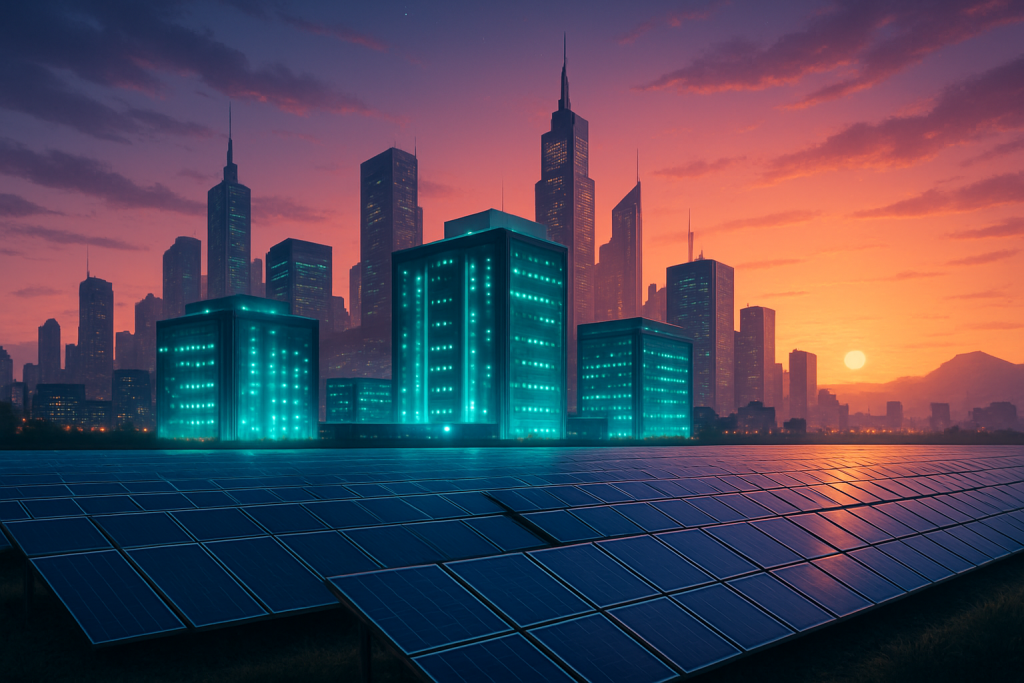Picture this: it’s June 29th, 2025. The air is thick with anticipation for the next big tech breakthrough. We’re promised flying cars, personalized medicine, and AI that can write better sitcoms than network executives. But amidst the digital buzz, a sobering alarm bell rings. Microsoft CEO Satya Nadella, a man who’s seen the matrix and probably has its source code on a thumb drive, steps up with a stark warning: our AI obsession is draining the planet’s power faster than a teenager with a new phone.
Nadella’s message wasn’t a casual observation; it was a full-blown State of the Union address on the energy crisis brewing within the AI revolution. He essentially said, “Houston, we have a power problem, and it’s named GPT-27.”
To understand the gravity of this, let’s rewind a bit. Remember the early days of AI, when it was mostly about chatbots that couldn’t tell a joke to save their lives? Those were simpler times, energy-wise. But then came the Cambrian explosion of AI, fueled by massive neural networks and the insatiable hunger of large language models. Think of it like this: your old Tamagotchi required a tiny button cell. Modern AI? It’s more like a city-sized server farm that guzzles electricity like Homer Simpson at an all-you-can-eat donut buffet.
Training these AI behemoths, the ones that can generate realistic images of cats playing poker or write surprisingly coherent screenplays, requires immense computational power. Deploying them, making them available for everyday use, isn’t much better. Every search query, every generated image, every AI-powered suggestion is a tiny sip from a rapidly dwindling energy reservoir.
Nadella wasn’t just waving his hands in the air. He laid out the cold, hard facts. The energy demands of AI are growing exponentially, outpacing both the development of renewable energy sources and the incremental improvements in energy efficiency. Our existing power grids, already groaning under the weight of electric vehicles and increasingly power-hungry households, are facing a digital tsunami of energy consumption.
And let’s not forget the data centers, the digital fortresses where these AI models reside. They are, to put it mildly, power-hungry beasts. Keeping them cool and operational requires vast amounts of electricity, contributing significantly to the carbon footprint of the tech industry. It’s like trying to cool a volcano with a garden hose.
The Ripple Effect: Who Feels the Burn?
So, who’s feeling the heat from this AI-induced energy surge? Pretty much everyone, directly or indirectly. Tech companies are facing mounting operational costs, grappling with the challenge of balancing innovation with sustainability. Energy providers are scrambling to meet the skyrocketing demand, potentially leading to higher prices for consumers. And, of course, the environment is bearing the brunt of it all, with increased greenhouse gas emissions exacerbating climate change.
Consider Google, for example. Every time you ask Bard a question, you’re indirectly contributing to their energy consumption. Multiply that by billions of queries per day, and you start to see the scale of the problem. Or think about the companies building self-driving cars, constantly training their AI models on massive datasets. All that processing power comes at a cost, both financial and environmental.
The Political and Ethical Minefield
Nadella’s warning also throws a spotlight on the political and ethical dimensions of AI development. Should governments regulate the energy consumption of AI models? Should there be incentives for companies to prioritize energy-efficient AI? These are complex questions with no easy answers. It’s a bit like the debate around cryptocurrency mining, but on a far grander scale.
Ethically, we’re faced with a trade-off: do we prioritize technological progress at the expense of environmental sustainability? Can we truly have our AI cake and eat it too, without bankrupting the planet’s energy resources? These are the kinds of questions that keep philosophers and policymakers up at night.
The Quest for Sustainable AI: A Call to Action
However, it’s not all doom and gloom. Nadella’s statement is also a call to action, a challenge to the tech industry to find innovative solutions. He’s essentially saying, “Okay, we’ve created this monster. Now, let’s figure out how to feed it responsibly.”
One potential solution lies in developing new algorithms and hardware that require less energy. Think of it as the AI equivalent of switching from a gas-guzzling SUV to a fuel-efficient hybrid. There’s a growing movement towards “green AI,” focusing on developing more efficient models and optimizing existing ones.
Another crucial step is investing in renewable energy sources and implementing green practices in data centers. Companies like Microsoft are already making strides in this area, powering their data centers with solar and wind energy. But more needs to be done, and quickly.
Perhaps the most important element is industry-wide collaboration. Establishing standards and best practices for energy-efficient AI development is essential. It’s not enough for individual companies to act in isolation. We need a collective effort, a shared commitment to sustainability. Imagine a consortium of tech giants, researchers, and policymakers working together to create a blueprint for a greener AI future. It sounds like something out of a sci-fi movie, but it’s a vision worth striving for.
Ultimately, Nadella’s warning is a wake-up call. It reminds us that technological progress comes with responsibilities. We can’t blindly pursue innovation without considering the environmental consequences. The future of AI depends not only on its capabilities but also on its sustainability. As Uncle Ben famously said, “With great power comes great responsibility.” And in the case of AI, that responsibility includes ensuring that our digital dreams don’t turn into an environmental nightmare.
Discover more from Just Buzz
Subscribe to get the latest posts sent to your email.


